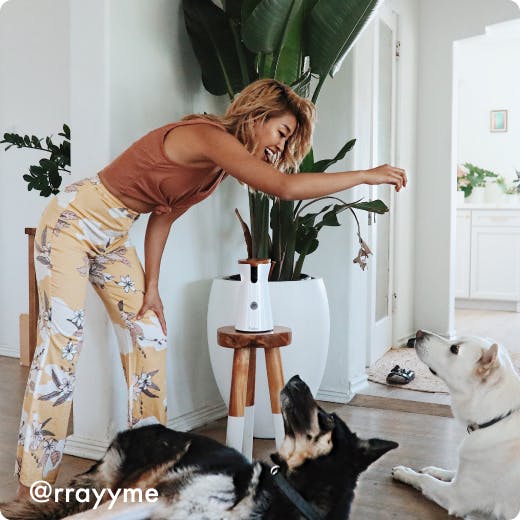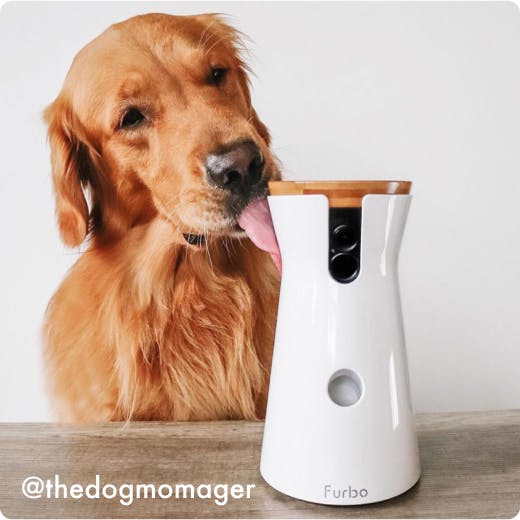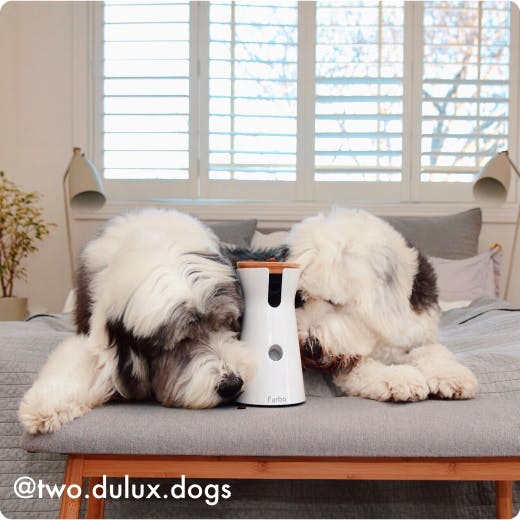
Spring is in the air! And so are the pollen, dust, and other allergens that emerge with the blossoms. Just like hoomans, your dog can suffer from seasonal allergies. Here’s how you can keep your pup safe and comfy with the changing seasons.
Common Seasonal Allergy Culprits
What’s to blame for your pup’s discomfort?
Pollen
Trees, flowers, grasses, and weeds all release pollen that’s inhaled by doggos and hoomans alike. Different types of pollen affect each dog differently, so the severity of their symptoms can vary depending on how sensitive your pup is and how much pollen is floating around.
Mold and Mildew
In regions where it gets damp and humid seasonally, mold and mildew can thrive and release spores into the air. If your dog spends time outside playing in your backyard or going for walks in wooded areas, these spores can irritate your dog’s skin or lungs when exposed.
Pesky Pests
As the weather changes, fleas, dust mites, and ticks come out to play. Flea bites commonly cause itching and discomfort in affected dogs. Dust mites, which thrive in warm and humid environments, can trigger a similar allergic reaction. Ticks pose an additional risk, as they also carry diseases like Lyme disease.
🐶 Furbo Pro Tip: If you do find a tick on your pup, remove it immediately using a tick key. This helps you properly extract the insect’s head and minimize irritation. Clean the affected area immediately to reduce the risk of infection.

If you’re stressed about your pup having an allergic reaction when you’re out and about, the Furbo 360° Dog Camera is here to help! Its Rotating 360° View and Full HD Camera with Night Vision help you keep an eye on them from anywhere.
Allergy Symptoms to Watch For
As the weather warms up, keep an eye out for these top 3 allergic reactions in your dog:
1. Itchy Skin
One of the most common allergy symptoms in dogs is excessive itching and scratching. If left unchecked, this may lead to hair loss or cracked skin vulnerable to infection.
If you notice your doggo is obsessively itching, licking, or chewing at their skin, inspect them for any irritation or inflammation. Pay close attention to their ears, belly, paws, and face. You may also notice dandruff (flaky dried skin) in these areas.
2. Changes in Behavior
You may notice your dog becoming irritable or restless more than usual. On the other hand, your pup may act lethargic and disinterested in the activities they enjoy like walkies and playing with toys.
Sometimes your dog’s symptoms may manifest as physical discomfort and gastrointestinal upset, leading to vomiting and loss of appetite. Indicators of tummy troubles can also include:
- Drooling
- Lip smacking
- Pointedly turning their head away from their food dish
3. Difficulty Breathing
Allergies can also affect your dog’s respiratory system. Sneezing, coughing, and even labored breathing can leave your pup gasping for air. Listen in on your pup’s breathing and watch their behavior: are they wheezing? Scratching at their nose or shaking their head a lot? These can indicate that they’re really uncomfortable.
⚠️ In severe cases, breathing difficulties may constrict their airways or lead to anaphylaxis. If your pup shows extreme signs of respiratory distress, seek veterinary care immediately!

Worried your pup may be exhibiting these symptoms when you’re not looking? Furbo Dog Nanny offers AI-powered Smart Alerts like the Vomiting Alert and Continuous Barking & Crying Alert to notify you immediately if your dog throws up or needs immediate attention.
Treating Your Dog’s Seasonal Allergies
With proper care and attention, you can help your furry friend enjoy a happier, healthier spring! Here’s how you can help:
Talk With Your Vet
It’s always best to speak to a medical professional ASAP when your dog shows any signs of discomfort. Your veterinarian may prescribe antihistamines like Benadryl to reduce inflammation and itching. In more severe cases, they may opt for a corticosteroid.
Apply Topical Treatments
Prevent your dog from chronic licking and chewing with an anti-chew spray. The bitterness of the spray will deter your dog from nibbling around the affected area. This lets the irritated skin dry out and begin to heal.
Once they’ve stopped tending to the area, you can use an aloe vera spray to help soothe the area. Avoid using a gel as large amounts can be harmful. Supervise your pup for the next few days to ensure they leave the area alone.
Practice Routine Skin Care
Bathing your dog can help remove allergens and irritating buildup from their skin and coat. Use a gentle, hypoallergenic shampoo and conditioner with ingredients like oatmeal and aloe vera. Be sure to rinse thoroughly to avoid residue buildup, which can contribute to itching and irritation.
Once they’re clean, brush their fur regularly to remove loose hair, dirt, and buildup that may keep their skin itchy. Finally, consider adding fish oil to their diet. Omega-3 fatty acids have anti-inflammatory properties that can make their skin feel less irritated.

🐶 Furbo Pro Tip: Keep a record of your doggo’s symptoms and when they occur. Furbo Dog Nanny’s Doggie Diary is the perfect tool! Using Furbo’s Cloud recording, it creates a highlight reel of your pupper’s day that can be shown to your veterinarian.
Keep Your Doggo Comfy This Spring
As the days grow longer, you and your pup can get ready for those sunny adventures together! Furbo is here to help you keep the fun going all spring (and summer!) long. 🐾☀️

Fetch your Furbo 360° Dog Camera and enjoy an allergy-free spring with your pup 🐕🌸







